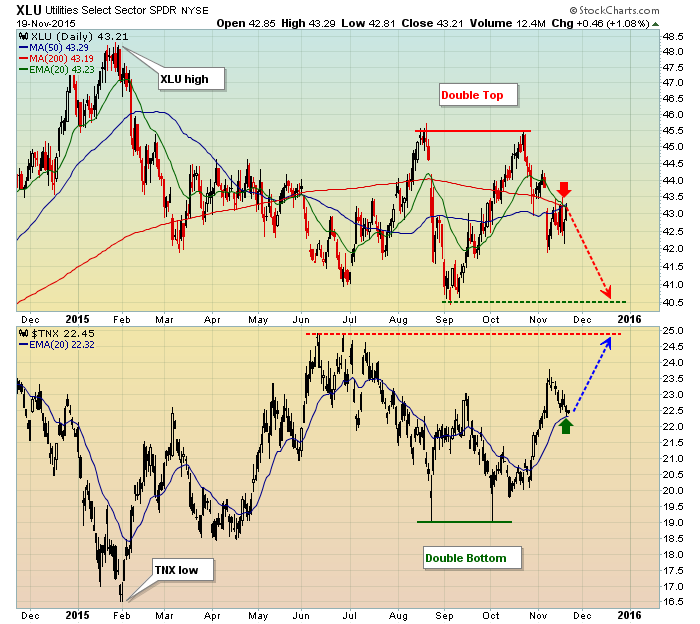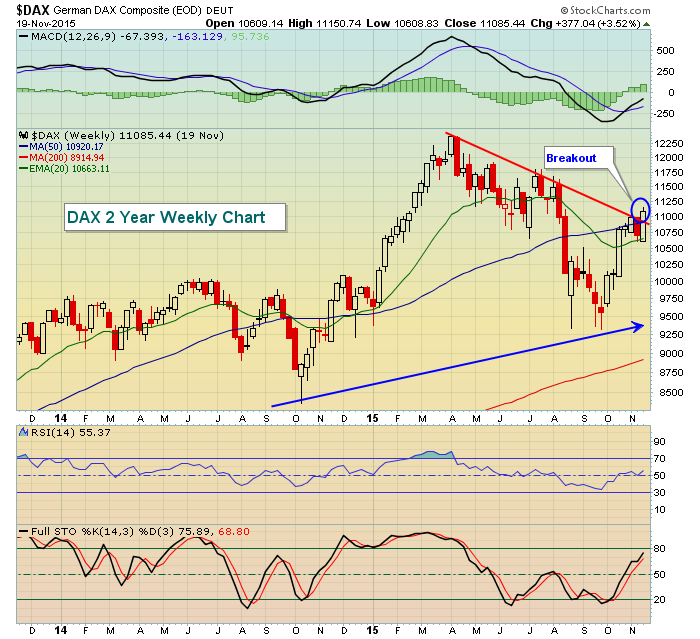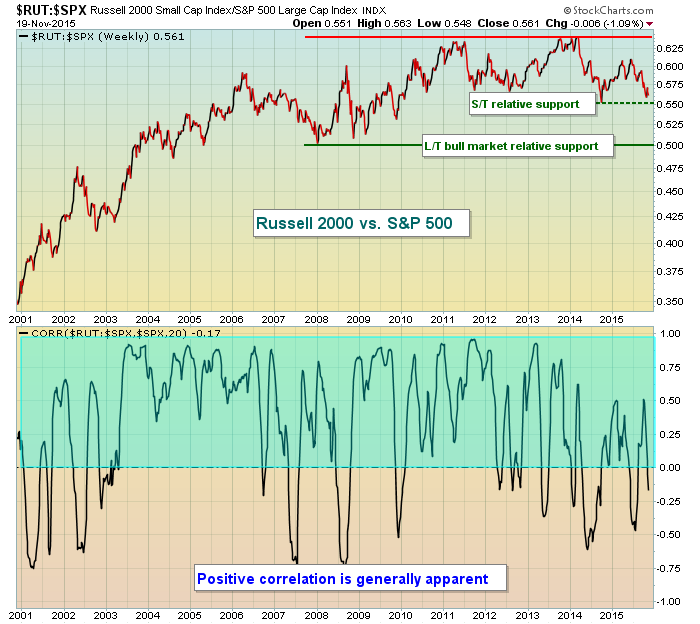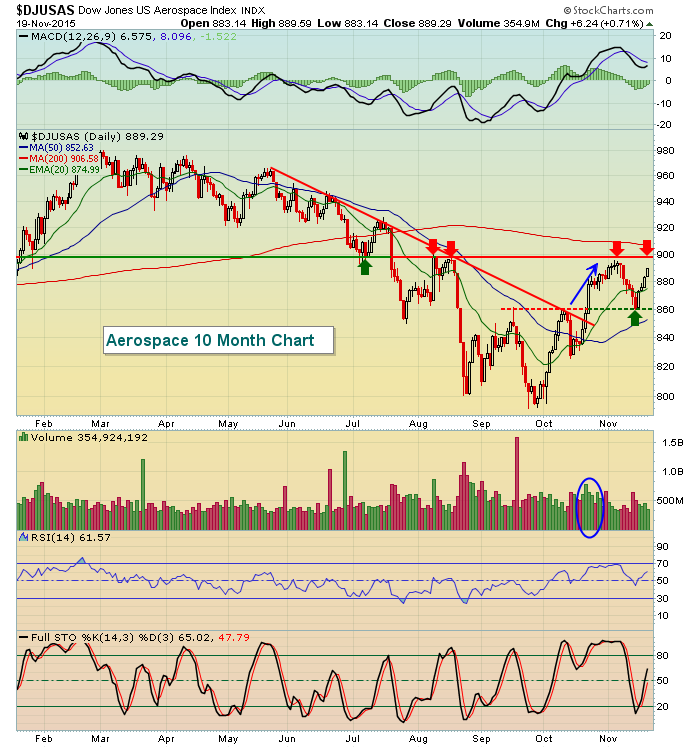Market Recap for Thursday, November 19, 2015
The U.S. stock market was bifurcated on Thursday with the NASDAQ 100 able to eke out small gains while the others were fractionally lower. Utilities were easily the sector performance leader, but it's been a rough few weeks for the XLU. Meanwhile, the pause in the 10 year treasury yield ($TNX) advance is aiding the sudden revival of utilities. But both have reached a pivotal area technically as you can see below:
I've indicated my expectations through year end by using the red dotted line to show the XLU declining, while the blue dotted line marks what I believe will be higher treasury yields into December's Fed meeting. Feel free to disagree. :-)
Pre-Market Action
Asian markets finished mostly higher overnight and after early weakness in Europe, we've seen the key indices there turn higher as well. Throw in a couple solid earnings reports this morning from retailers Abercrombie & Fitch (ANF) and Foot Locker (FL) and thus far it's making for a positive start for U.S. futures. Strength in the German DAX ($DAX) on Thursday carried it to "post-August correction" highs as shown below:
Assuming we finish higher today, it appears we've now broken the multi-month downtrend line on the DAX weekly chart, which is a positive for the S&P 500 because of the strong positive correlation between the two indices. Let me just say it certainly doesn't hurt. The rising 20 week EMA on the DAX now becomes solid support on any short-term declines.
Current Outlook
There are a number of different areas of the market, including certain intermarket relationships, that make sense to keep an eye on for clues about overall stock market direction. Two that can help us determine perceived economic strength in the U.S. are relative performance of small caps (Russell 2000) vs. their larger cap counterparts (S&P 500) and the performance of railroads ($DJUSRR).
On a relative basis, the Russell 2000 once again lagged the S&P 500 on Thursday and its relative ratio has been declining again since peaking on November 6th. That behavior always places a question mark on perceived economic strength here in the U.S. Railroads is another avenue available to help determine future economic activity in the U.S. The DJUSRR has been very weak throughout much of 2015, but recent buying has enabled this transport group to test its critical declining 20 week EMA. A breakout above would be bullish. Below are two charts - the first is the Russell 2000's relative performance vs. the S&P 500, while the second details the performance of railroads - and correlation indicators are at the bottom of both charts to show the significance of each in sustaining a stock market advance or downtrend:
RUT vs. SPX:
This chart suggests that it's important to view the relative performance of the Russell 2000 vs. the S&P 500 (RUT:SPX) because there's a positive correlation between the direction of this ratio and the direction of the S&P 500. And it makes sense to me because small caps are an aggressive area to invest and during bull markets traders turn to aggressive areas of the market to seek higher returns.
DJUSRR:
While neither of these charts reflects expected strength ahead, the action in treasuries current does. Therefore, I'm watching both of the above charts to seek confirmation of what the treasury market is beginning to tell me.
Sector/Industry Watch
Aerospace ($DJUSAS) is an important area of industrials and this group is approaching key price resistance on its daily chart as illustrated below:
The current trading range is from 860-900, but the momentum definitely appears to have reversed. We now see a daily MACD that's been above centerline support for six weeks. This renewed upward momentum began in mid-October with a surge in volume to clear trendline resistance. Two companies that look solid technically and have been outperforming their aerospace peers are Boeing (BA) and Embraer Aircraft (ERJ). Should the DJUSAS break above price resistance, I'd look to BA and ERJ for continuing relative strength and outperformance.
Historical Tendencies
The following represents the average annualized returns for the calendar months of November and December, respectively, for each of the following indices:
S&P 500 (since 1950): +18.11%, +20.10%
NASDAQ (since 1971): +19.56%, +23.99%
Russell 2000 (since 1988): +15.13%, +40.18%
Key Earnings Reports
(actual vs. estimate):
ANF: .48 vs .19
FL: 1.00 vs .94
Key Economic Reports
None
Happy trading!
Tom





